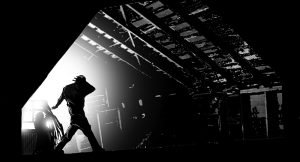“He said that the purpose of books was to permit us to exercise that faculty. Art, he said, was a controlled madness, which was why the people who selected books for high school English classes were careful to choose only false books that were discussable, boring, and sane, or else, if they chose a real book by mistake, they presented it in a way that ignored everything great and mad about it. He said that high school was for morons and mediocrities. He said that his mother had agreed never to enter his room so long as he changed his sheets once a week. He said the books weren’t made of themes, which you could write essays about, but of images that inserted themselves into your brain and replaced what you were seeing with your eyes.”
Steven Millhauser’s short story “The Room in the Attic” brings forth a sense of dramatic realism that would typically not be seen as boring. The setting itself would not be seen as something that brings forth conflict. Millhauser chooses to put a young girl (Wolf’s sister) in the attic to make the darkroom more interesting and appealing. The idea that this little girl is living in the attic tends to draw the reader in. It also is Millhauser’s way of introducing a potential conflict between the narrator and the young girl. As we discussed in class, conflict in any story needs another person in the story to be interesting and be a relatable conflict. Furthermore, when Millhauser begins the novel with, “I first saw Wolf in March of junior year. This isn’t his story, but I suppose I ought to begin with him,” he is establishing that the point of view is first person. This usually means that the narrator is unreliable. Because we know this as writers, we question whether the story is about Wolf or not; this causes us as readers to want to know the truth. As we find out, the story is not about Wolf, but Millhauser’s exposition makes us believe that the narrator has lied because he is constantly describing how cool Wolf is in the exposition and what Wolf thinks about school. We learn as we go into part II of the story that this book is about the unseen in the darkroom and the mystery of Wolf’s sister who eventually disappears. Millhauser’s writing of the dark room and what Daves thinks is in this room gives us a realistic, but magical perception and this is what makes this story fantastic.
